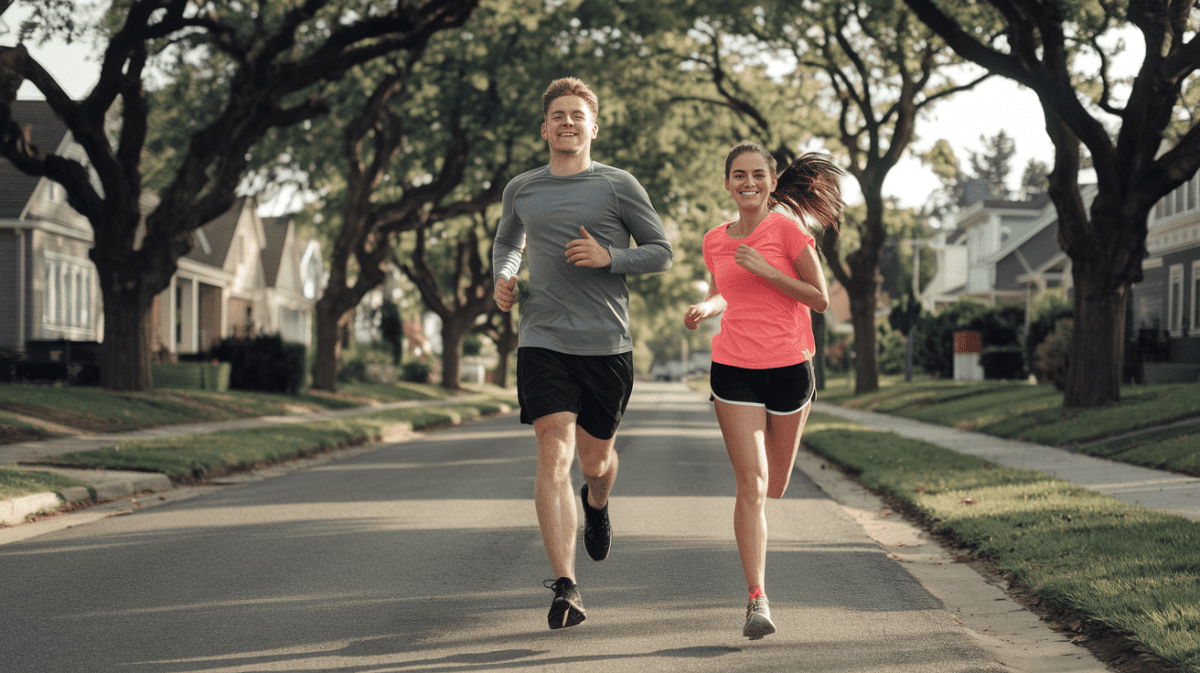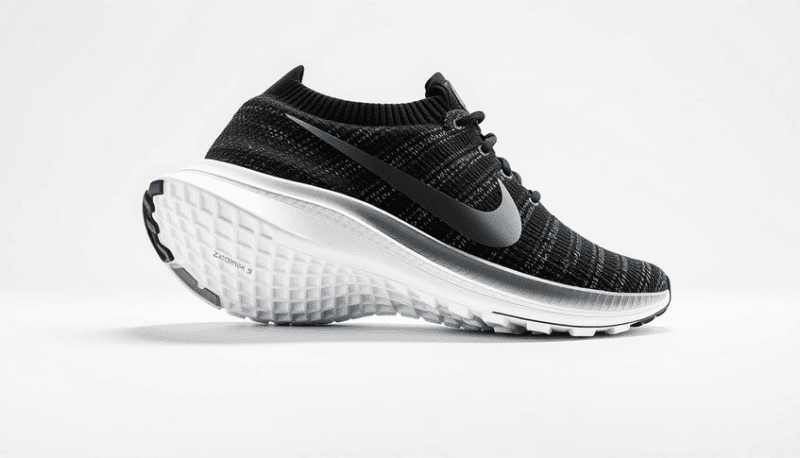Making that selection for walking vs. running:
Choosing the right sneakers can significantly impact a fitness routine, whether one prefers walking or running.
For walking, lightweight shoes with good arch support work best, while running requires shoes that offer cushioning and stability.
Understanding these differences can help users select the right footwear for their activity level and fitness goals.

When it comes to sneaker anatomy, features like sole design and material can enhance performance and comfort.
Proper maintenance also plays a crucial role in extending the life of athletic shoes, ensuring they deliver the support needed over time.
Staying informed about shoe recommendations is key for those engaged in regular physical activity.
Individuals can maximize their workouts and reduce the risk of injury by selecting the right sneakers.
Key Takeaways
- Walking shoes should focus on lightweight support and comfort.
- Running shoes need extra cushioning and stability for better performance.
- Proper maintenance of sneakers can prolong their usability and effectiveness.
Defining Fitness Goals
Setting clear fitness goals is essential for anyone looking to start or improve their walking or running routine.
Different objectives will influence the type of sneaker a person should choose, enhancing comfort and performance.
Walking Objectives
When it comes to walking, goals often focus on health and enjoyment.
Many people aim to walk a certain number of steps each day, such as 10,000. Others may wish to improve heart health, maintain a healthy weight, or simply enjoy the outdoors.
Walking goals can also include distance goals, like completing a specific number of miles each week.
It can be about increasing stamina and strength over time.
Comfort and support are key in selecting sneakers for walking, and features like cushioning and arch support can make a big difference.
Running Ambitions
Running goals can differ greatly from walking.
Some runners aim for speed or distance, while others want to complete races like 5Ks, marathons, or triathlons.
Establishing these ambitions helps in designing a training plan and staying motivated.
For runners, choosing the right sneakers is crucial. They need shoes that offer stability, cushioning, and breathability. Proper fit reduces the risk of injuries.
Goals may also involve improving personal records, building endurance, or simply enjoying the process of running more.
Anatomy of Sneakers

Sneakers consist of various components that work together to provide comfort and support. Understanding these elements helps in choosing the right sneaker for walking or running.
Cushioning and Support
Cushioning provides shock absorption, which reduces the impact on feet during movement.
It is often made from materials like EVA (ethylene-vinyl acetate) or gel. These materials ensure a soft landing with every step.
Support is crucial for stability. Features like arch support and heel counters are common in sneakers.
Arch support helps maintain the foot's natural curve. A firm heel counter keeps the heel in place and helps prevent injuries.
Sneakers designed for running typically have more cushioning than those for walking. Walkers may prefer a firmer feel for better ground contact.
Material and Design
The materials used in sneakers greatly affect performance and breathability.
Common upper materials include mesh and synthetic fibers. Mesh offers ventilation, keeping feet cool during activity.
The midsole is where cushioning happens. It often consists of lightweight foam for effective shock absorption.
Running shoes may use advanced materials designed to return energy with each step.
Outsoles, usually made from rubber, provide traction and durability. The tread pattern is vital for grip, especially on uneven surfaces.
Design elements like color and style can also affect a buyer's choice.
Sneaker Fit and Sizing
Proper fit is essential for both comfort and performance.
A snug fit ensures that the foot does not slide around. Sneakers should have enough room in the toe box for the toes to wiggle without feeling cramped.
Sizing can vary between brands, so trying on sneakers is important.
For a more accurate fit, shopping later in the day when feet may be slightly swollen is advisable.
In addition to length, width matters.
Sneakers have different widths (narrow, standard, wide) to accommodate various foot shapes.
A well-fitting sneaker prevents blisters and foot pain.
Sneaker Recommendations

Choosing the right sneakers can enhance comfort and performance for both walking and running. Below are key recommendations tailored for each activity and some versatile options.
Best Sneakers for Walking
For walkers, comfort and support are crucial. A few top choices include:
- New Balance 990v5: Known for its cushioned sole and stability. It offers great arch support and is suitable for longer walks.
- ASICS Gel-Foundation 12: This sneaker features gel technology, providing shock absorption and comfort for extended wear.
- Brooks Ghost 14: Light and breathable, it allows for natural foot movement and has excellent cushioning.
These sneakers are designed to handle various terrains while keeping feet comfortable during long periods of walking.
Top Running Sneakers
Runners need sneakers that are lightweight and provide good energy return. Consider these options:
- Nike Air Zoom Pegasus 39: This shoe combines responsiveness with cushioning, making it ideal for different distances.
- Saucony Endorphin Speed 3: It features a carbon-fiber plate for a propulsive feel, great for speed workouts and races.
- Hoka One One Clifton 8: Known for its thick cushioning, this sneaker helps reduce impact, perfect for long-distance runs.
These selections balance support and performance, making them excellent for various running styles.
Versatile Options for Both Activities
Some sneakers adapt well to both walking and running. Here are some standout choices:
- Adidas Ultraboost 22: Offers a plush feel and is great for casual walks or running sessions.
- Mizuno Wave Rider 25: Known for its balanced cushioning, it works well for everyday walking and running routines.
- On Cloudstratus: This shoe has dual-layer cushioning and is designed for comfort and responsiveness in multiple activities.
These versatile sneakers can meet the demands of both walking and running, ensuring all-around satisfaction.
Maintenance and Care

Proper maintenance and care of sneakers enhance performance and extend their lifespan. Regular cleaning and attention to materials can prevent wear and tear, ensuring they effectively support walking or running routines.
Cleaning Techniques
Regular cleaning helps maintain sneakers' look and feel. Dirt and grime can build up over time, affecting both style and function.
- Remove Laces: Start by taking out the laces. This allows for a thorough clean.
- Use a Soft Brush: Use a soft brush to remove loose dirt. A toothbrush works well for this.
- Mild Soap Solution: Mix warm water with a few drops of mild soap. Dip the brush into the solution and gently scrub the surface.
- Air Dry: Never use heat to dry sneakers. Instead, let them air dry naturally in a cool, shaded place.
Different materials require specific approaches.
For example, suede sneakers need special brushes to avoid damage, while mesh can often be machine washed.
Sneaker Lifespan
The lifespan of sneakers can vary based on usage and care practices. On average, sneakers used for walking or running should be replaced every 300 to 500 miles.
- Daily Use: For those using sneakers daily, signs of wear include flattened cushioning and visible tears.
- Storage: Store sneakers in a cool, dry place to avoid moisture damage. Keeping them in their original box can also help maintain shape.
- Rotation: Alternating between two pairs can extend the life of both pairs. It allows materials to recover from wear.
Taking small steps in care can significantly enhance a sneaker’s durability. Regular inspection helps spot issues early, making it easier to keep sneakers in good shape.
Frequently Asked Questions

This section addresses common questions about the differences between walking and running shoes, how they impact performance, and what features to consider when choosing sneakers for these activities. It also discusses the necessity of separate shoes and how often to replace them.
What are the key differences between walking and running shoes?
Walking shoes are designed to provide good heel support and promote a smooth roll through the foot. They usually have a wider toe box for comfort and flexibility.
Running shoes, on the other hand, focus on cushioning and shock absorption. They often feature more advanced technology to handle the stresses of running at higher speeds.
How does the choice of sneakers affect performance in walking and running?
The right sneakers can significantly improve comfort and stability during activities.
Walking shoes help prevent fatigue over longer distances, while running shoes enhance speed and reduce the risk of injury.
Wearing the incorrect type of shoe can lead to discomfort and impact overall performance.
What features should be considered when selecting sneakers for a mixed walking and running routine?
When choosing sneakers for both activities, looking for cushioning and support is important. A breathable upper material will help keep feet cool.
Shoes with good traction are also essential. They can improve stability on various surfaces.
Can running shoes be effectively used for walking, or should separate shoes be used for each activity?
Running shoes can be used for walking, but they may not provide the best support for that activity. Having separate shoes can enhance comfort and performance.
Selecting the right shoes for each activity is beneficial for foot health in the long run.
How often should sneakers be replaced when frequently engaging in walking and running workouts?
Sneakers should typically be replaced every 300 to 500 miles, depending on their wear and tear. Walking often requires less cushioning than running, so shoes might need replacing sooner.
Regularly checking the condition of the shoes helps ensure they remain effective.
What are the signs of inadequate footwear for either walking or running?
Signs of bad shoes include noticeable wear on the soles. Discomfort or pain while walking or running can also be a sign. Blisters and increased fatigue can also indicate that the shoes are not providing sufficient support.
Listen to your body to avoid injuries linked to poor footwear.
DISCLAIMER
This document is provided for general information purposes only and should not be relied upon as providing legal advice, technical, or specific operational guidance to the reader, whether as to the practices described in the document or the applicable legal requirements and regulations. SAVE ON SNEAKS expressly disclaims any responsibility for liability arising from or related to the use or misuse of any information in this document.



